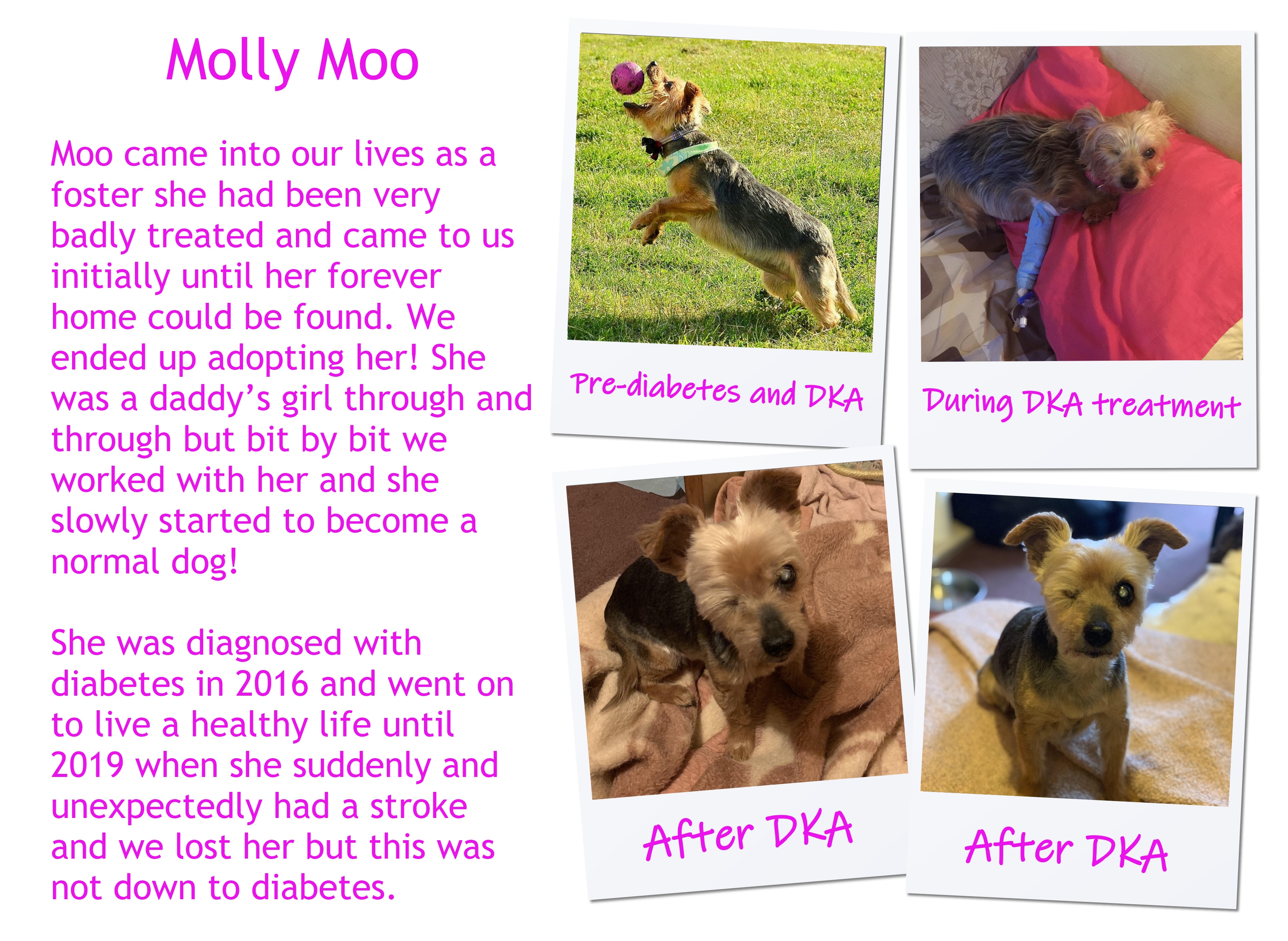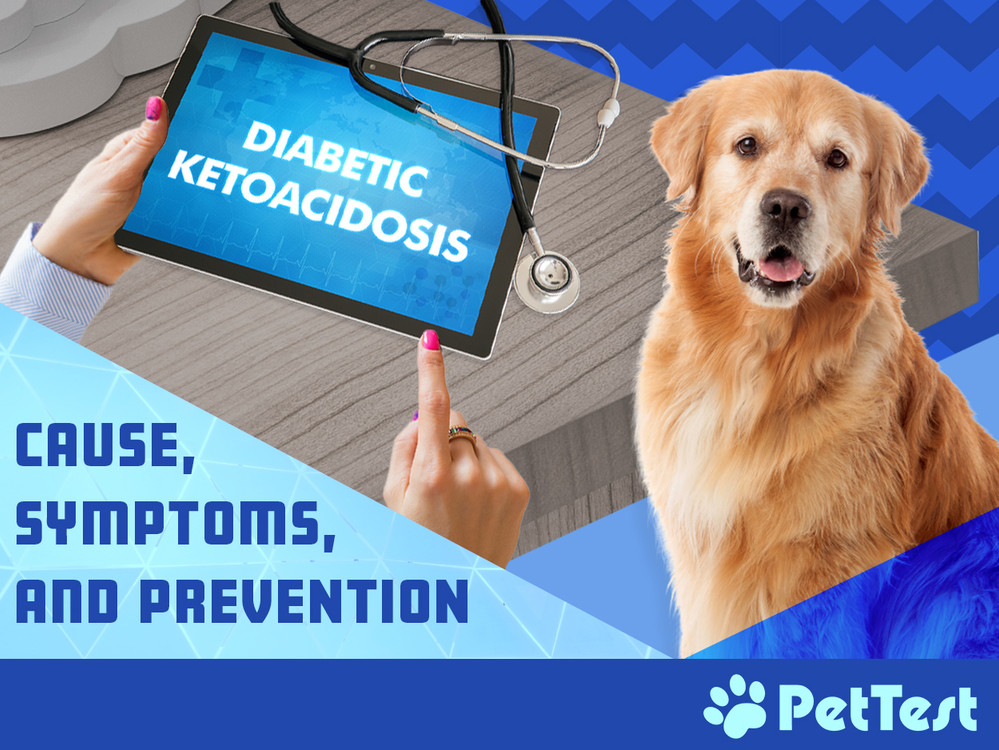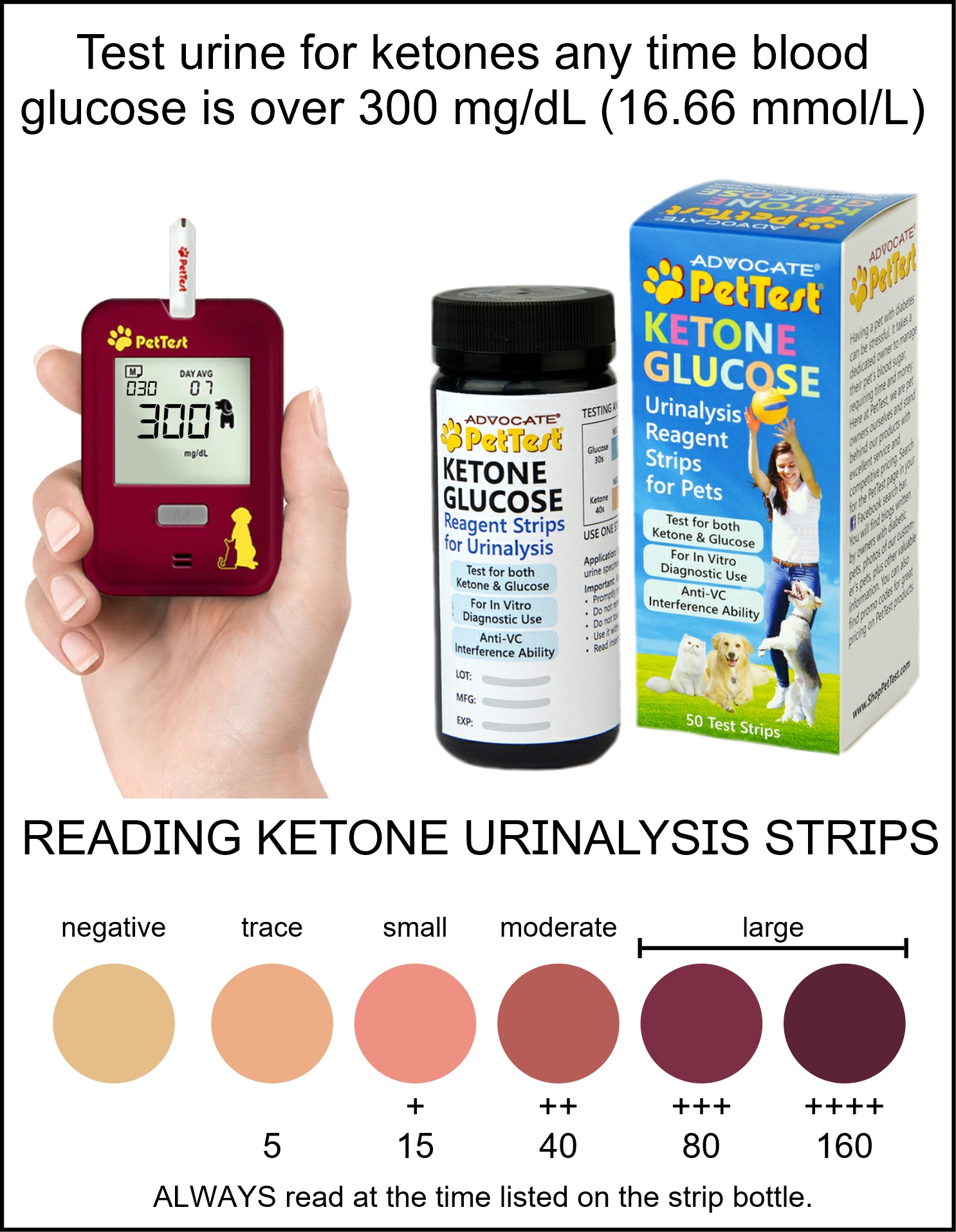Diabetic Ketoacidosis (DKA): Its Cause, Symptoms and How to Keep DKA at Bay
It is common for a dog to be diagnosed with diabetic ketoacidosis (DKA) when they are diagnosed with diabetes. Dogs have a higher threshold for pain and they cannot talk so they can’t tell us when they don’t feel well.
Thankfully Lucy never had DKA so I do not have personal experience with this serious illness. We have seen it often in our Facebook group Diabetic Dog Owners and we push awareness of ketones and DKA. Today I am going to go over the cause of diabetic ketoacidosis, symptoms, treatment and a couple things you can do to keep DKA at bay. Following this is an interview with Emma Trueman, our UK administrator and mom of Molly, who was extremely ill with diabetic ketoacidosis.
Grab a cup of your favorite caffeinated beverage (Mountain Dew Spark for me today) and let’s get to it!
What is diabetic ketoacidosis (DKA)?
DKA is a serious complication of uncontrolled high blood glucose levels. When there is not enough insulin to open cells to accept glucose, the body uses another source of energy. The liver synthesizes fat into ketone bodies and uses ketones as energy. Ketone bodies are a type of acid and build up causes the blood to become acidic.
Ketones:
- Acetoacetate (AcAc) – these ketones stay in the body for a longer period.
- 3-bea-hydroxxybutyrate (3HB) – leaves the body with insulin therapy.
- Acetone – less common, are breathed out (why we smell acetone or fruity breath).
Possible causes for uncontrolled blood glucose include infection, not enough insulin being given or illnesses/diseases causing blood glucose to be high.
What are symptoms of diabetic ketoacidosis?
- Excessive thirst
- Increased urination
- Lethargy
- Weakness
- Vomiting
- Increased respiratory rate
- Decreased appetite
- Sudden weight loss / muscle wasting
- Dehydration
- Unkempt coat
- Bloating / swollen appearance
- Mental confusion
- Abdominal pain
- Fruity scented breath / smells like acetone
Treatment for diabetic ketoacidosis (DKA)
- Insulin therapy – a regular type insulin is given to bring down blood glucose levels quickly.
- Fluid replacement therapy – fluids are given for dehydration and electrolyte replacement. Low potassium (hypokalemia) is common with diabetic ketoacidosis
- Antibiotics – given if an infection is present.
Treatment at the vets or in a hospital setting is required. Insulin can be given using CRI (constant rate infusion), this allows for controlled and continuous medication to be given over a period.
How can we keep diabetic ketoacidosis at bay?
Monitoring blood glucose levels and testing urine for ketones gives us great insight into what is going on. Any time blood glucose is over 300 mg/dL (16.66 mmol/L) you should test urine for ketones. If urine is positive for ketones and they are trace they can be flushed out by encouraging water consumption. Anything over trace requires vet intervention. If ketones are small giving fluids subcutaneously or via IV can flush them out. Insulin needs to be adjusted and an increase may be in order.
(click on pic below to save for future reference)
Besides keeping DKA at bay, we keep those expensive vet bills at bay as well by testing urine and blood glucose!
I wanted to get firsthand perspective from my friend Emma whose sweet girl Molly had DKA. Here is her interview.
When was Molly diagnosed with diabetes?
A: Moo was diagnosed in 2016 she was drinking loads and had lots of gastric issues.
Was she diagnosed with any other illness or disease when she was diagnosed with diabetes?
A: Molly had an infection which they thought was in her liver so she was put on steroids. This didn’t and help and she was not improving, she also got a pot belly around this time so they tested for Cushing’s which she didn’t have - finally they did blood tests again and it showed diabetes.
When was Molly diagnosed with DKA and what were symptoms you noticed?
A: Excessive thirst and then vomiting that back up, listless she wouldn’t move, crying, wouldn’t eat, shaking, and then just constant diarrhea.
What was the treatment plan?
A: Originally her vets couldn’t identify the problem this happened on a Saturday, but she was literally crying and shaking constantly we took her immediately to the emergency vets who told me almost immediately it was ketoacidosis (DKA) at this point her prognosis was very poor - her organs were starting to shut down. Her treatment plan was intensive insulin they put her on regular insulin and then she was put on an IV drip and IV antibiotics- at this stage her liver was shutting down as well so she was also given nutrients to replace what she had lost via drip. After 24 hours, she started to show signs she was improving, her ketones were negative and her blood glucose had fallen rapidly so we carried on with her treatment.
If you don't mind my asking, how much was treatment and did she have insurance?
A: Her treatment all told was £7,500 ($9,606 USD) and thankfully she was insured.
How long did it take for Molly to get better?
A: She was in hospital for 7 days and then when she came home it took around 14 days until she was herself again!
What steps did you take to ensure she didn't go into DKA again?
A: firstly, I bought ketone strips and every time she went potty I took her ketones. Then I began testing her blood glucose religiously to start with four times a day, then when things settled to twice a day and I changed her diet to home fed and she thrived.
What do you wish you knew now that you didn't know back then?
A: I wish I had known about ketones had no clue what they were and I wish I had known or been educated by my vets about testing her glucose and what to look out for regarding ketones.

Until next week stay comfy and caffeinated!
If you have any questions, comments or suggestions, please start a conversation below.
Do you need a blood glucose meter kit for your diabetes arsenal? Click here to purchase one today!
Click here for PetTest Ketone Glucose Urinalysis Test Strips.
If you are looking for a Facebook community to join for support, I have proudly been an admin in Diabetic Dog Owners for over five years. You can also join Canine Diabetes Support and Information on Facebook as well.
Be sure to join the PetTest family on Facebook and Instagram. PetTest has fun, interactive posts AND they have fabulous giveaways every week!
For a printable version of this blog click here.


